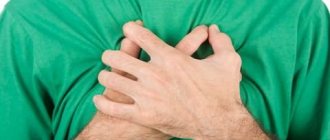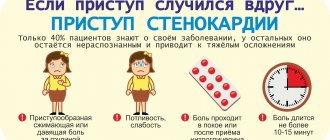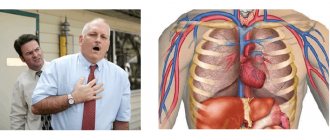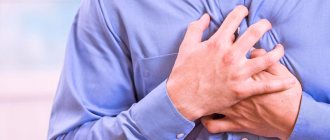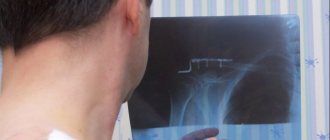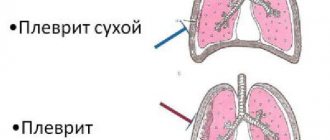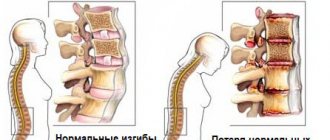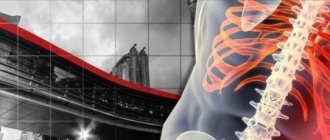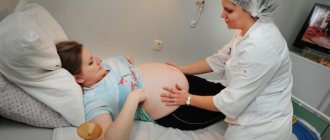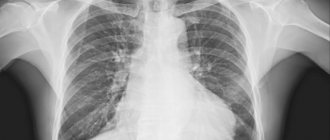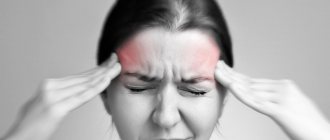If breathing causes pain, this does not necessarily mean that it is the respiratory organs that are hurting. Chest pain on the left side when taking a deep breath, which is extremely similar to heart pain, also does not always mean that it is a sign of heart disease.
Pain in the chest area, which gets worse during deep inspiration, is often caused by neurological problems, injuries or diseases of the spine.
There are so many provoking factors that differentiating the diagnosis requires in-depth research and testing, which indicates the impossibility of independently identifying the causes. But getting acquainted with their diversity still makes sense.
Pain when inhaling as a sign of pathology
Acute pain in the left side allows you to recognize many diseases. It manifests itself at different stages of pathology formation, which makes it possible to timely diagnose the disease and begin its treatment. Pain syndrome is a characteristic symptom of such ailments:
- pneumonia and pleurisy;
- pericarditis;
- heart disorders;
- pathology of the diaphragm;
- intercostal neuralgia;
- osteochondrosis;
- pyelonephritis or renal colic;
- gastritis;
- ulcer;
- pancreatitis;
- appendicitis;
- chest injuries;
- changes in the spleen.
Inflammation of the lungs and pleura are the most common causes of pain in the left hypochondrium. This condition, in addition to pain, will be manifested by the following clinic:
- increased body temperature;
- dyspnea;
- cough, often with sputum;
- weakness.
When painful sensations appear against the background of inflammation or cancerous tumors of the heart sac, the following changes will additionally appear:
- shallow breathing;
- increased pain with body movements;
- cardiopalmus;
- increase in blood pressure values.
Intercostal neuralgia develops when the intercostal nerves are irritated or compressed. In this case, the pain in the left hypochondrium will be aching, or it may be burning or dull.
Intercostal neuralgia is a possible cause of pain in the left hypochondrium
If the patient presses on certain points on the sternum, back or near the spinal column, the pain intensifies. Intercostal neuralgia is also characterized by the manifestation of a pain symptom between the shoulder blades and under them, in the lower back. As the disease develops, numbness is noticeable at those points where injured nerve fibers are found.
Long-term stress and injuries can cause pain in the left hypochondrium. This is due to the appearance of hernias and strangulation of the diaphragm. This disease is accompanied by the development of severe pain in the left hypochondrium during inspiration, when significant pressure is placed on the organ. Its localization depends on the affected area and its development.
When the appendix is inflamed, the pain symptom spreads not only to the left side of the abdomen, but also diverges in other directions and to the navel. The patient is also concerned about increased gas formation, which decreases after cleansing the small and large intestines, but after some time it may return from inhalation or sudden movements.
Symptoms of heart disease include aching pain under the left rib, shortness of breath when the body is exerting itself and in a calm state, rapid heartbeat, heaviness, and burning in the chest. If a patient's coronary arteries are affected, the blood supply to the myocardium is disrupted, which leads to ischemia. The same symptoms are characteristic of cardiomyopathy. Painful attacks progress with exercise, weakness and rapid fatigue are felt.
The spleen is the organ closest to the surface of the body. If its functioning is disrupted or damaged by internal or external factors, it begins to increase in volume, which leads to pain in the left hypochondrium.
Disruption of the functioning and anatomical structure of the spleen occurs due to viral and infectious diseases. If the spleen is injured, the organ may rupture. This condition is accompanied by massive internal bleeding and requires urgent surgical intervention.
Stitching pain in the left hypochondrium when inhaling is characteristic of pyelonephritis - bacterial or viral inflammation of the kidney tissue. The clinical picture of the disease is supplemented by the following manifestations:
- heat;
- impaired urination;
- increased sweat production.
Osteochondrosis progresses in the human body due to the loss of strength and elasticity of the tissues that are needed to connect the intervertebral discs. Dystrophic changes occur in the articular cartilage and spine. With this process, the nerve endings that extend from the spinal cord are compressed, which causes painful sensations in the left hypochondrium.
Gastritis and ulcerative defects of the walls of the stomach and duodenum are among the most common diseases that are characterized by dull pain in the left hypochondrium. Irritation of the membrane most often occurs after eating food. Along with the pain symptom, other signs also appear - flatulence and vomiting, heaviness in the stomach, weakness, pale skin, dry mouth, heartburn, irritability.
Symptoms of stomach ulcer
The last pathology in which pain occurs at the entrance is associated with the pancreas. The appearance of sharp pain in the left hypochondrium indicates the formation of pancreatitis. The patient feels a girdle pain, which occurs along with high fever, nausea, vomiting mixed with bile and bitterness in the mouth. Signs of the disease become more intense if the patient bends or sits down.
Causes
If your back hurts in the lung area, then the diagnostician faces an important task - determining the true origin of the symptoms. A primary care doctor must have good clinical experience and be highly qualified, because such a symptom indicates a wide range of pathology. And each disease, as is known, requires its own approach to treatment. Therefore, when experiencing pain in the thoracic region, one must keep in mind the possibility of developing the following conditions:
- Osteochondrosis.
- Intervertebral hernia.
- Pneumonia and pleurisy.
- Lungs' cancer.
- Cardiac ischemia.
- Intercostal neuralgia.
In fact, the list of diseases that can cause back pain is much more extensive, but first of all they think about the above. As you can see, this includes not only pathology of the spine, but also diseases of vital internal organs: lungs and heart. Therefore, you need to take this symptom seriously and, the first time you feel pain, immediately see a doctor.
A thorough analysis of the risk of certain diseases in the patient is necessary. This will help suggest the correct diagnosis.
Pain when inhaling as a variant of physiology
Every person at least once in his life has felt pain in the left hypochondrium. However, this does not mean that everyone has at least one of the above diseases.
Very often you may feel pain in your side when you inhale due to irrational physical activity. At the same time, the blood supply to the internal organs significantly increases and leads to pain in this area. This often happens if a person does not have sufficient physical training.
With a sudden change in body position or intense training, the right vena cava compresses the liver. This leads to a stabbing sensation that radiates to the left side.
What to do?
Let's figure out what to do if the right or left lung hurts. You should seek medical help if you feel:
- pressure, fullness or tightness in the chest, pain or burning sensation in the left / right lung;
- severe pain that spreads through the back, neck, jaw, shoulders and left arm;
- unexplained sweating;
- dizziness, nausea or weakness;
- shortness of breath (shortness of breath).
You should also seek medical help if your right lung pain worsens with deep breathing, coughing, or laughing.
In many cases, pain in the lung on the right side of the chest goes away on its own after a day or two. If the pain persists or is intense, you should consult a doctor.
You can try lifting your head off the pillow if you feel pain in the left or right lung when you lie down. If you are sitting you can try:
- Lean forward slightly.
- Place your elbows on your knees or on the table.
- Relax your neck and shoulder muscles.
If you're standing, you can try:
- Place your feet shoulder-width apart.
- Lean your hips against the wall.
- Relax your shoulders.
Sit and focus on your breathing if your front right lung hurts or if your breathing becomes too heavy. Tell your doctor if painful breathing goes away with rest. You can also reduce your risk of lung disease by reducing your exposure to:
- cigarette smoke;
- environmental pollution;
- toxins in the workplace.
Avoiding risk factors for heart disease can help prevent related diseases and subsequent symptoms, including left and right lung discomfort. You can reduce your risk of heart attack, angina, and other forms of heart disease by:
- losing weight;
- decreased blood pressure;
- lowering cholesterol levels;
- reducing salt and saturated fat intake.
Treatment
Treatment for pain in the left hypochondrium cannot be delayed. Otherwise, complications of diseases may develop that are difficult to cure even with surgery. If medical care is not provided in a timely manner, or if there are complications that require immediate medical intervention, the patient may die.
If the patient experiences intense pain when inhaling, it can be relieved with antispasmodics and painkillers. However, it is worth remembering that pathologies also manifest themselves in other symptoms, which may worsen while taking certain medications. If there is the slightest discomfort in the left hypochondrium area, a person should seek the help of a doctor for diagnosis and treatment.
Chest injuries
As a result of the injury, damage to the lung may occur due to compression, shaking, or impact (pulmonary contusion). When a lung is bruised, the blood vessels and bronchi are damaged, and hemorrhages can occur. But the pleura is not disturbed.
Symptoms of lung injury:
- a person feels pain in the left or right lung (depending on where the injury occurred), which often intensifies with deep inhalation and sharp exhalation;
- discomfort (pain) increases when changing body position, bending;
- as a result of a severe injury, tachycardia and rapid breathing appear as a result of lack of oxygen (development of a state of shock);
- distinctive signs for diagnosing a lung contusion are cyanosis of the skin, swelling and subcutaneous hemorrhages;
- expectoration of blood if there are pulmonary hemorrhages.
A post-traumatic complication in the form of pneumonia may appear in the damaged area of the lung. Treatment of a lung contusion is aimed at relieving possible complications (pneumonia, hemorrhage). If the injury is minor, then the victim only needs rest.
Intercostal neuralgia
This pathology occurs when intercostal nerves are compressed either near the spinal column (nerve roots) or in the intercostal space (nerve endings). It is characterized by pain when taking a deep breath under the ribs of a different nature: compressive, dull or stabbing, aching, burning. The pain is localized not only near the heart, but can occur in the collarbone, increases with sudden movements, palpation, and radiates to the scapula.
Causes of neuralgia:
- osteochondrosis;
- injury;
- physical overload;
- hypothermia;
- stress;
- complication of a cold;
- unsuccessful movement;
- metabolic disorders, etc.
Treatment of intercostal neuralgia occurs in two stages. First, the pain syndrome is relieved, then measures are taken to eliminate the disease that caused the pinched nerve.
The most common neuralgic cause of pain on the left side of the chest is osteochondrosis - a disorder of the structure and function of articular cartilage (the most common is intervertebral discs).
The main causes of osteochondrosis are:
- metabolic disorder;
- hereditary predisposition;
- spinal injuries;
- curvature of the spine, flat feet;
- hard work (physical overload);
- prolonged incorrect postures (asymmetrical positions, incorrect posture)
- age-related changes.
These disorders lead to damage to the intervertebral discs, as a result of which the vertebrae gradually move closer to each other, pinching the nerve roots. There is pain and muscle numbness.
The main methods of treatment are drug therapy, therapeutic massage and physical exercise. Traditional methods and acupuncture are also used.
Signs of intercostal neuralgia
Diagnostic methods
Common examination techniques.
Symptomatic indications for most diseases and pathological disorders in the chest area are of a similar nature. Accordingly, to make an accurate diagnosis and prescribe the necessary treatment, it is necessary not only to collect an anamnesis (personal observations) of the patient, but also to perform examination procedures and prescribe additional tests.
During the examination, the local doctor listens to the lungs through a stethoscope and additionally taps the chest area.
The instructions also suggest the use of the following techniques:
- thoracentesis;
- angiography;
- radiography;
- fluorography;
- bronchography;
- bronchoscopy;
- Ultrasound of the lung (pictured);
- CT scan
- taroscopy, etc.
Fact! Thanks to these research methods and the results of a general examination, the attending physician is able to determine the exact cause of pain in the lungs.
This allows you to choose the optimal treatment method for each individual case, because some pathological disorders have several development options and can cause a lot of trouble during treatment.
How does an ultrasound of the lungs work?
The video in this article will introduce patients to the basic methods to determine the true cause of unpleasant sensations.
Pleurisy
Why does pleurisy develop?
Typically, this pathology develops as a consequence of an infectious lesion of the pulmonary system. Examples of such diseases are bronchitis, chronic obstructive pulmonary disease (COPD) or pneumonia.
Pleurisy itself is an inflammatory lesion of the protective layer of lung tissue, which is expressed by the following series of symptoms:
- pain when inhaling or coughing;
- pain manifests itself in the lateral regions;
- general weakness;
- increased sweating during periods of sleep.
The pathology can be exudative (with sputum) and dry. With the exudative type of pleurisy, a large amount of exudate is formed, which begins to accumulate in the respiratory lumen. The dry type of pleurisy is characterized by the absence of exudate and the appearance of fibrin - plaque on the epithelial part of the lungs, which is why part of the respiratory organ is blocked.
Among the complications of this pathological disorder are:
- pleural empyema;
- pleural adhesions;
- fistulas of the bronchopleural region.
After diagnosis, a surgeon and pulmonologist will treat a patient with pleurisy. With timely treatment, the risks of complications are reduced to the minimum acceptable level.
Pneumonia
Inflammatory damage to the lung tissue of an infectious nature can also cause pain in the chest.
Pain may occur with pneumonia.
Important! The nature and intensity of such manifestations may vary depending on the extent of the affected area and its location.
The symptoms of pneumonia are as follows:
- elevated temperature;
- general weakness;
- dizziness;
- drowsiness;
- wheezing when breathing;
- dyspnea.
Depending on the extent of the lesion and its location, the pain can be either encircling or localized on one side. After diagnostic studies confirming the diagnosis of pneumonia, the optimal method for eliminating the pathology and preventing the development of complications such as pleurisy, pneumothorax, abscess of lung tissue, etc. is selected.
In this case, it doesn’t matter whether the right lung or the left one hurts when inhaling - the reason is the localization of the inflammatory process.
Thromboembolism and pulmonary infarction
Thromboembolism of the pulmonary artery is a pathological condition of the blood vessels of the pulmonary system, which requires urgent intervention by medical professionals.
The pain intensifies on inspiration.
The pathological condition can develop due to existing disturbances in the functioning of the circulatory system, cancer, or as a result of traumatic injury.
The main symptoms are as follows:
- difficult breathing;
- chest pain;
- cough with blood.
Important! The rapid development of these symptoms requires an urgent call for emergency medical help, since a person with such a disorder can die within a few minutes.
If the thrombus damages only peripheral vessels in the pulmonary system, then the symptoms will be smoothed out with a gradual increase in manifestations - a pulmonary infarction occurs within 2-3 days.
In this case, there is a strong decrease in blood pressure, severe shortness of breath occurs and the nasolabial triangle turns blue. This pathological development requires urgent resuscitation.
Pneumothorax
Pneumothorax is a fistulous injury to the integrity of the lung tissue, in which air masses from the lung sac can penetrate into the pleural cavity.
What signs indicate pneumothorax.
